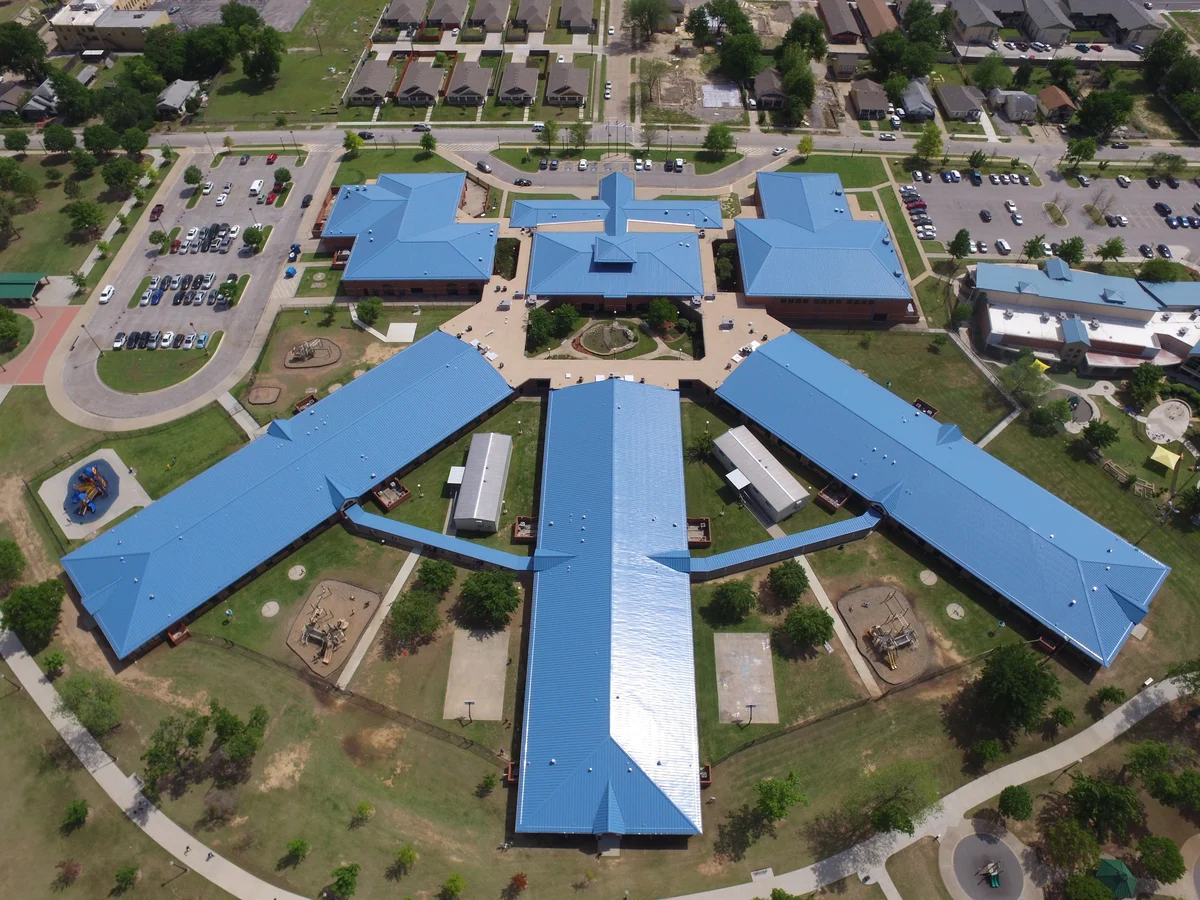The 138T and 238T standing seam systems combine sleek architectural design with unmatched durability—offering symmetrical panels that solve maintenance headaches while delivering the clean lines modern buildings demand.
When Form Finally Follows Function (And Both Look Amazing)
The roofing industry has reached an inflection point where architects no longer have to choose between stunning aesthetics and bulletproof performance. Standing seam designs are the darling of 2025. These roofs are sleek, modern, and available in a variety of colors and finishes. The concealed fasteners make for a clean look, while the durability of metal ensures a roof that can last up to 50 years.
McElroy Metal’s 138T and 238T systems exemplify this evolution. These aren’t your grandfather’s barn roofs—they’re sophisticated architectural elements that happen to provide shelter. The symmetrical design creates uninterrupted sightlines from eave to ridge, while the mechanical seaming technology ensures weather-tight performance that warranty departments actually stand behind.
Why Symmetrical Design Changes Everything for Architects
Traditional standing seam panels force you into left-to-right installation sequences that constrain both design and construction logistics. The 138T and 238T systems eliminate this limitation through symmetrical geometry—panels that look identical from either direction.
This design philosophy delivers two critical advantages for architectural projects:
Installation Flexibility: Construction crews can start anywhere on the roof plane, work around mechanical penetrations, and return to complete sections when other trades finish their work. No more waiting for sequential installation to accommodate HVAC or solar contractors.
Future Adaptability: Buildings evolve, and so should their roofs. Individual panels can be removed and replaced without disturbing adjacent sections—essential for structures designed to last 60+ years. Imagine specifying a skylight addition or equipment upgrade 20 years from now without tearing off half the roof.
Technical Performance That Backs Up the Bold Design
Standing seam is becoming more and more popular in architectural applications because of its modern and clean look, but the engineering performance validates the aesthetic choice. Most systems exceed UL 580 uplift requirements, meet ASTM wind uplift, water infiltration standards, and accommodate thermal movement without compromising the building envelope.
The mechanical seaming process creates a continuous, weather-tight connection that outperforms snap-lock systems. Instead of relying on friction, mechanically crimped seams offer improved uplift performance. Paired with a floating clip system, panels expand and contract naturally, reducing the risk of oil-canning and disengagement.
Slope Capabilities:
- 138T: Minimum 1:12 slope (suitable for most commercial applications)
- 238T: Down to ½:12 slope (approaching flat roof territory)
Panel Dimensions:
- 138T: 1⅜” rib height, available in 12″, 16″, or 18″ widths
- 238T: 2⅜” rib height, available in 16″, 18″, or 24″ widths
Architectural Applications That Showcase the System
The versatility of these panels makes them suitable across building typologies. Standing seam metal roofing is characterized by raised seams where panel edges connect and interlock, creating distinctive vertical lines running from the roof ridge to the eaves. This design not only creates a clean, modern aesthetic but also serves the practical purpose of keeping fasteners concealed.
Contemporary Residential: Clean lines complement minimalist architecture while providing the performance needed for decades of weather exposure.
Commercial Projects: From office buildings to retail centers, the professional appearance and low maintenance requirements align with lifecycle cost analysis.
Institutional Buildings: Schools, healthcare facilities, and government buildings benefit from the combination of durability and architectural sophistication.
Mixed-Use Developments: The ability to create large uninterrupted roof planes makes these systems ideal for complex buildings with varying occupancies.
Recover Systems: When Replacement Isn’t an Option
Many architectural projects involve existing structures where complete roof replacement isn’t feasible due to budget, disruption, or historic preservation requirements. Both systems offer recover solutions that install directly over existing roofing:
The 138T Shingle Recovery System creates a ventilated airspace between the old shingle and new metal roof, improving energy performance while eliminating tear-off costs. The 238T Metal-Over-Metal Recovery system uses structural framing to support new panels over existing metal roofs that have reached the end of their service life. These approaches transform retrofit projects from disruptive overhauls into strategic building improvements that enhance both performance and appearance.
Color and Finish Options That Match Architectural Intent
From deep charcoal and forest greens to rich reds and copper tones, metal roofing allows for a wide array of color choices that don’t fade easily thanks to advanced coatings like Kynar 500®. Both systems accommodate the full range of PVDF coatings, cool roof formulations, and textured finishes. Whether the design calls for understated neutrals that disappear into the landscape or bold statements that define the building’s character, the coating technology ensures color retention for decades.
The Bottom Line for Design Professionals
The 138T and 238T systems represent the maturation of standing seam technology into genuine architectural elements. They solve the age-old challenge of creating roofs that demand robust engineering performance while making strong design statements.
For architects weighing options, these systems offer the rare combination of proven technical performance, installation flexibility, and long-term maintainability wrapped in aesthetics that enhance rather than compromise the architectural vision. In an industry where compromises often masquerade as solutions, that’s worth specifying.
Ready to explore how 138T and 238T systems can enhance your next project? Contact McElroy Metal for technical specifications, sample panels, and project-specific engineering support.
Feature Image Courtesy of: McElroy Metal
View the original article and our Inspiration here


Leave a Reply